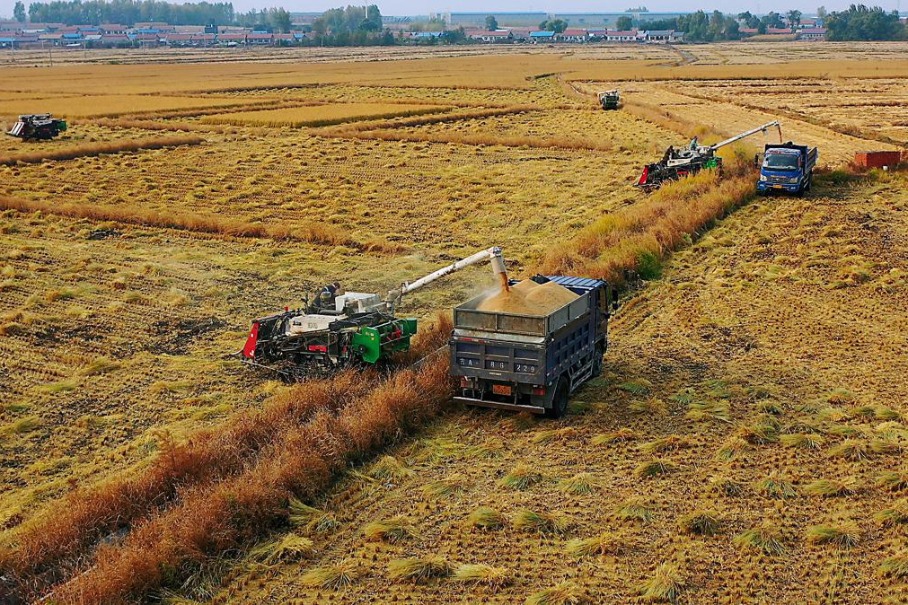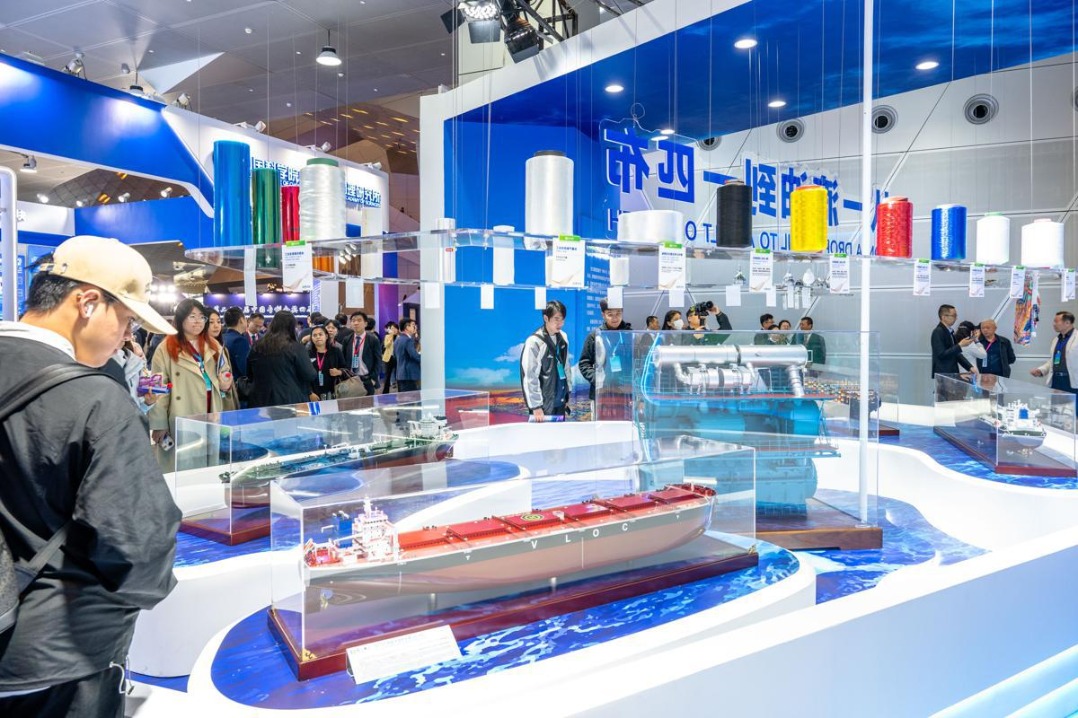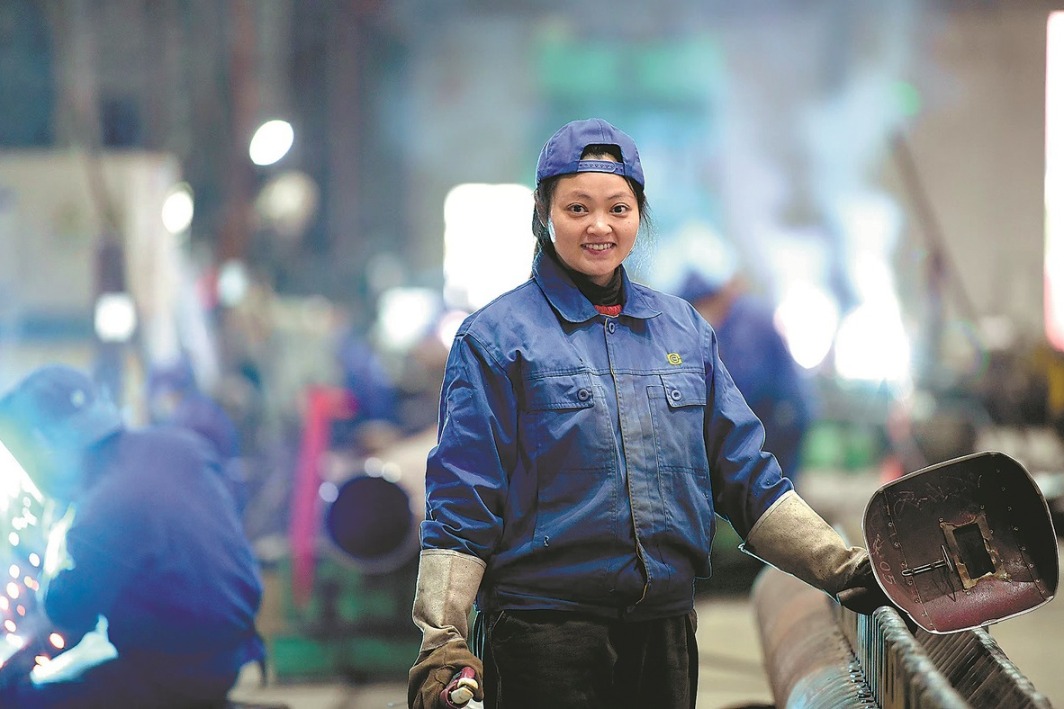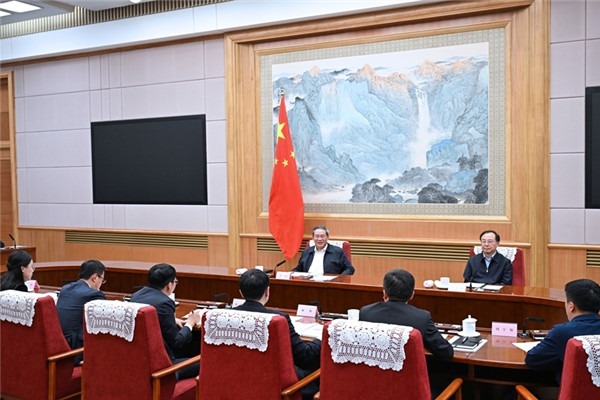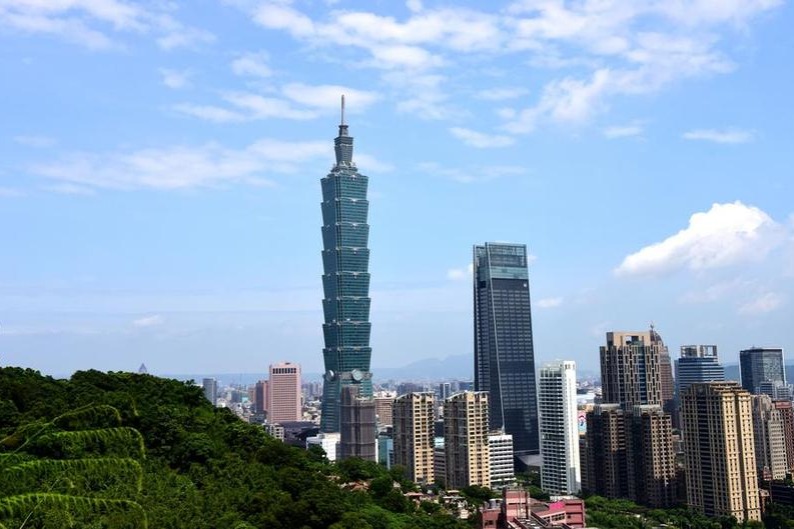Plan points way toward bluer skies


China's Cabinet sets air pollution control targets for next year to push green transition
The latest measures outlined by China to curb air pollution and promote its green transition by next year will pave the way for bluer skies and healthier lives while further propelling the nation's response to climate change, officials and analysts said.
An action plan aimed at improving air quality published by the State Council, China's Cabinet, last month included key targets to reduce the density of air pollutants in cities and shore up green industrial shifts, build a cleaner energy mix and develop a low-carbon transport system.
The action plan also mapped out key regions for air quality improvement, including the Beijing-Tianjin-Hebei region and surrounding areas, the Yangtze River Delta region and the Fenwei Plain, an area that comprises parts of Shaanxi, Shanxi and Henan provinces.
According to the plan, the nation is targeting a 10 percent reduction in the density of PM2.5 — particulate matter with a diameter of 2.5 micrometers or less — in prefecture-level cities next year when compared with levels in 2020.
According to the World Health Organization, exposure to PM2.5 can cause cardiovascular and respiratory diseases such as stroke, lung cancer and chronic obstructive pulmonary disease.
The density of PM2.5 in the Beijing-Tianjin-Hebei region and surrounding areas will be reduced by 20 percent, and that in the Fenwei Plain by 15 percent. Emissions of nitrogen oxides and volatile organic compounds will be cut by over 10 percent.
Liu Bingjiang, chief engineer with the Ministry of Ecology and Environment, told a news briefing last month that China was the nation that saw the quickest improvement in air quality over the past decade.
"However, the nation is still yet to witness a turning point from quantitative change to qualitative change in terms of air quality," he said.
He said severe pollution still occurs frequently, with the petrochemical sector making up a significant proportion of China's industrial structure and coal still dominating its energy mix.
China rolled out a national plan targeting pollutants including PM2.5 in September 2013 that included a raft of measures to renovate or close coal-fired boilers and power plants and promote green transport methods.
The use of natural gas across the nation doubled from 2013 to 2020, while steel production capacity was reduced by 250 million metric tons and coal production capacity by 1 billion tons, according to the ministry.
Liu said the containment of PM2.5 remained the priority in the latest national plan, which also emphasized the need to promote the green and low-carbon transformation of transportation to reduce emissions of nitric oxide and volatile organic compounds.
Based on years of meteorological monitoring and scientific research, the national plan now covers more cities in the area surrounding the Beijing-Tianjin-Hebei region, Liu added.
According to the plan, the nation will resolutely curb the launch of new projects with high energy consumption and carbon emissions, including steps to ban new steel production capacity, accelerate the removal of outdated capacity in key sectors and foster green industries.
More will be done to develop new and clean energy to ensure that non-fossil energy will account for 20 percent of the country's total energy consumption by next year. The nation's total consumption of coal will be strictly contained, with the plan targeting a 10 percent cut in coal consumption — compared with 2020 levels — in the Beijing-Tianjin-Hebei region and surrounding areas, and a 5 percent cut in the Yangtze River Delta region.
The development of a green transport system will be another policy priority, with the plan looking to increase cargo transportation via railways by 10 percent and waterways by 12 percent by next year compared with 2020.
New energy vehicles will account for no less than 80 percent of new or updated buses, taxis and other urban public transport vehicles in key areas, the plan said.
He Kebin, dean of Tsinghua University's Institute for Carbon Neutrality, said the action plan pointed the way forward in the battle to protect blue skies and promote high-quality economic growth through the continuous improvement of air quality.
He said China's air quality is still below the requirements for protecting human health, despite its remarkable pace of improvement. He cited data that showed the annual average concentration of PM2.5 in 339 cities at or above the prefecture level in China was still 5.8 times higher than the World Health Organization's air quality guideline levels for 2022, while there was also a significant difference between PM2.5 concentration levels in those cities and cities in Western countries.
Meanwhile, he said the nation's fight against air pollution was facing different challenges than a decade ago.
"It is now even more challenging for the nation to explore the space for reducing pollutants while continuing with rapid economic and social development, advancing industrialization and urbanization, and improving air quality to narrow the environmental gap with developed countries," he said.
He said putting structural measures in place to cut carbon emissions will be the key for China to achieve sustained improvement in air quality.
"The essence of China's ecological and environmental problems lies in its high-carbon energy structure and the high-energy, high-carbon industrial structure. Green and low-carbon development is the fundamental solution," he said, adding that it is an inevitable choice for China to synergize its efforts toward pollution reduction and carbon reduction to realize green and low-carbon development.
Wang Jinnan, an academician at the Chinese Academy of Engineering and former head of the Chinese Academy of Environmental Planning, said reducing PM2.5 concentrations will continue to be the primary focus and core objective of China's air pollution prevention and control.
To ensure the full implementation of the national action plan, Wang said local authorities must come up with their own plans while putting in place effective mechanisms to meet air quality standards and respond to weather conditions conducive to severe pollution.
Businesses must be encouraged to play a leading role in cutting emissions, proactively phase out outdated production procedures and equipment, improve production processes and expedite green upgrades, he added.
Chai Fahe, a researcher on air pollution at the Chinese Research Academy of Environmental Sciences, highlighted the significance of adopting targeted, scientific and lawful measures for air pollution control.
He said key sectors such as coal-fired power, steel and cement and the use of automobiles contributed over 80 percent of nitrogen oxide emissions, while sectors including industrial coatings and petrochemicals accounted for over 70 percent of volatile organic compound emissions.
"Therefore, it is necessary to prioritize upgrades in industrial, energy and transportation structures and strengthen the in-depth governance of pollution sources," he said.
xuwei@chinadaily.com.cn
- International students and foreign bloggers begin cultural tour of Shanxi
- Xi congratulates Patrick Herminie on election as Seychelles' president
- World Insights: Xi's new proposals chart new course for women's cause, experts say
- Jilin farmers use agricultural machines to harvest rice in golden autumn fields
- Top court urges harsh penalties for crimes involving firearms
- CCG conducts rights protection patrol off Diaoyu Islands
















